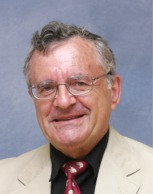Thinking in the Bubble: How to Detect Land Mines
By Shlomo Maital
Writing in the Hebrew daily Haaretz, today, Ruth Schuster reports on a clever creative invention by Hebrew University scientists.
The problem: undetected land mines.
“Land mines are the scourge of the survivor. They lurk in the soil for years and even generations after the fighting ends. Up to 20,000 people a year are wounded or killed after stumbling on hidden mines, and there has been no safe way for man or beast to detect them. According to Hebrew University, more than 100 million land mines remain buried around the world. Metal detectors do fine with traditional mines, but plastic ones elude them.”
A huge number of ideas to detect and clear mines have been tried. Here are a few:
Mine detection techniques have remained as pedestrian as they were in World War II: soldiers with sticks and serendipity; dogs, who do get killed; and pigs (a talent discovered by a kibbutznik in Israel). The most noteworthy advance in decades had been recognizing the mine-sniffing talents of the African pouched rat.
Now come Hebrew University of Jerusalem scientists, with a truly creative idea, thinking out of the box, or in the bubble or beads: Bubbles with bacteria that glow blue when they detect vapors emitted by land mines.. even tiny amounts of the gas, and all mines emit such vapors.
“Inspired by an idea that was first conceptualized in 1999, the scientists engineered bacteria that fluoresce when they come into contact with these vapors. The human mine detectors don’t have to keep the bacteria on a leash: they can monitor and react remotely. Nor are the bacteria free-range: they are encapsulated in beads that are scattered across the suspect land. The scientists tested the system with a laser-based scanning system, and the mines were found.”
Prof. Shimshon Belkin was responsible for genetically engineering the bacterial sensors. The research was published recently in the leading journal Nature.



Leave a comment
Comments feed for this article